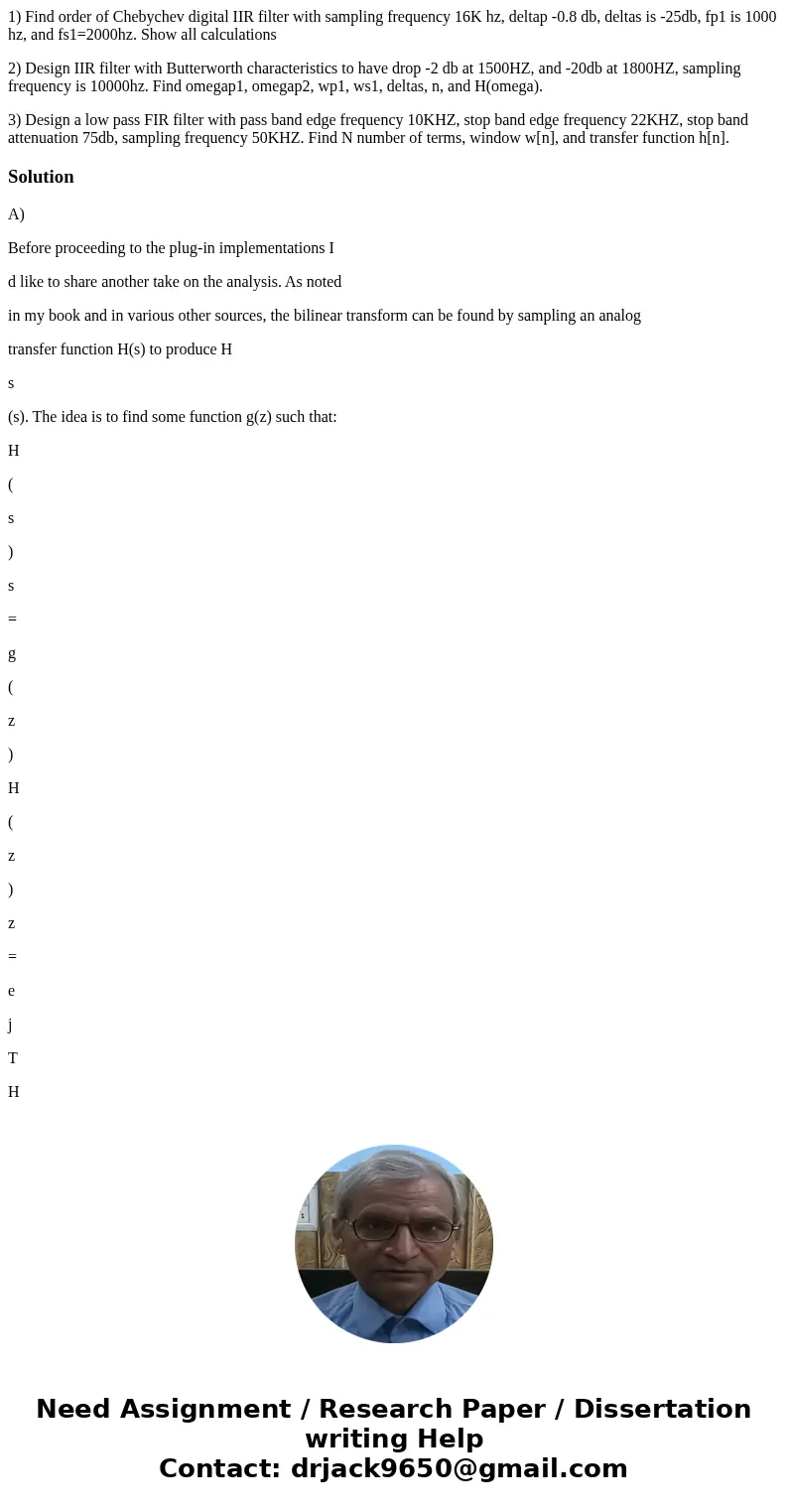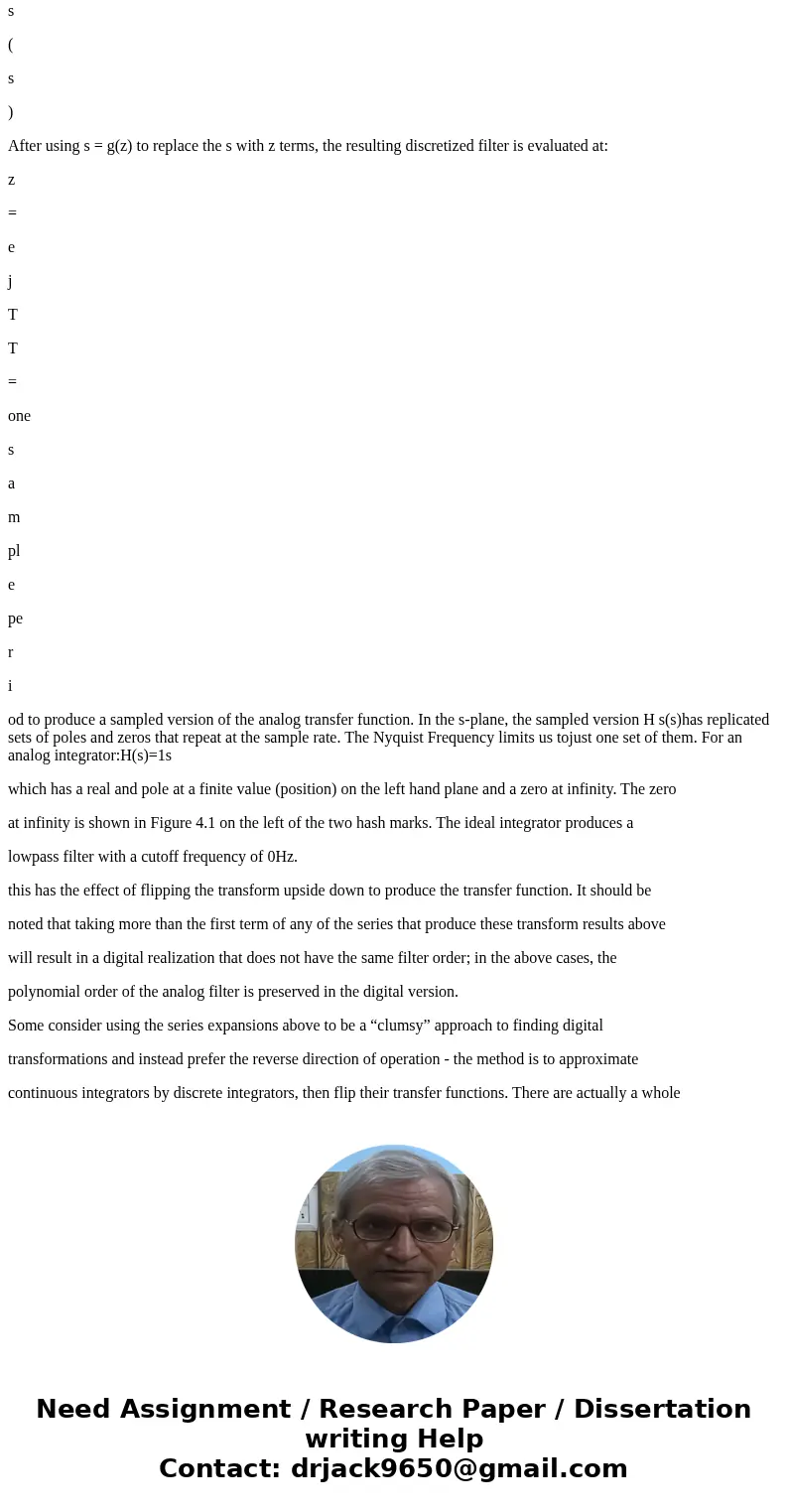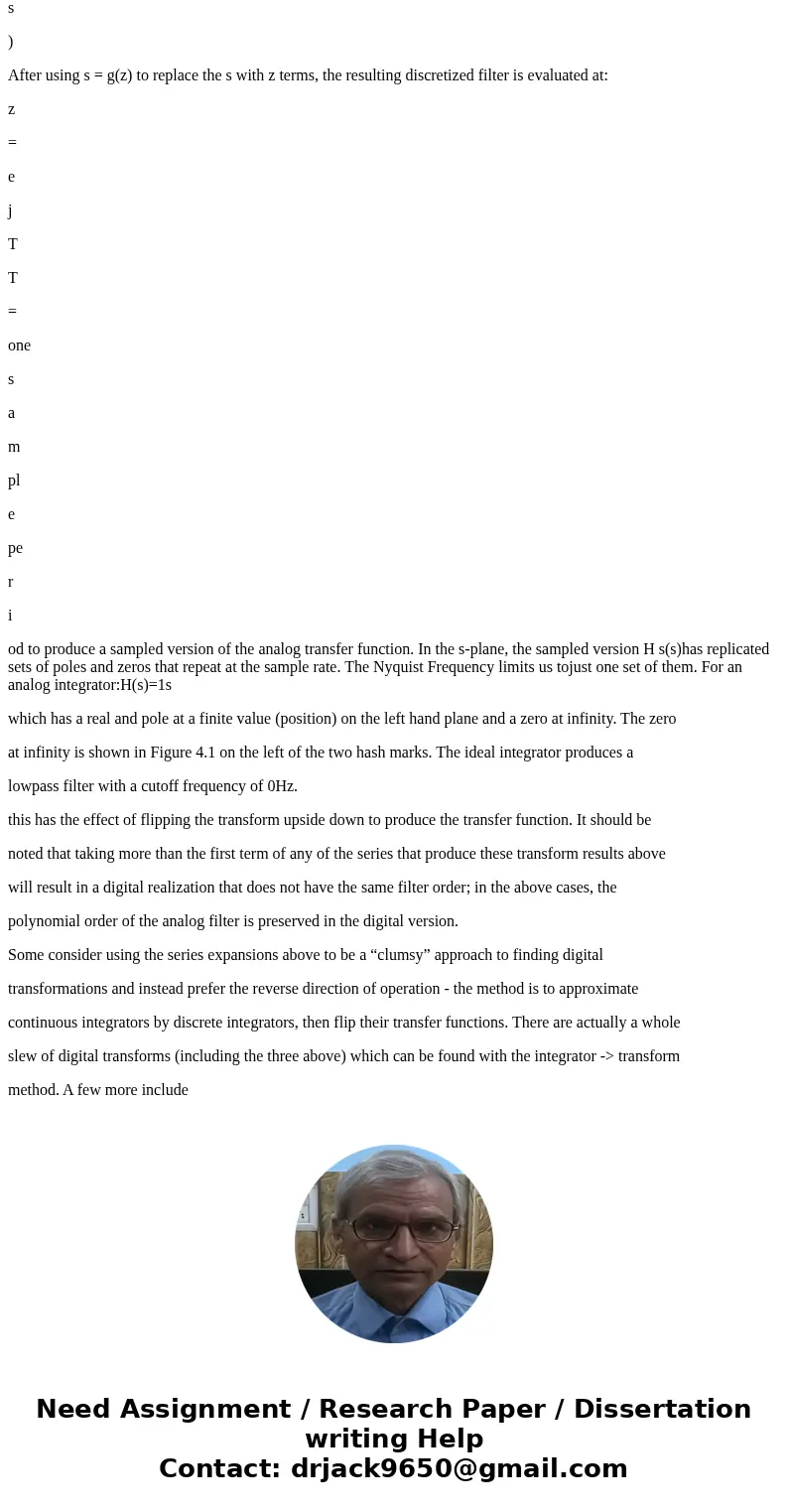1 Find order of Chebychev digital IIR filter with sampling f
1) Find order of Chebychev digital IIR filter with sampling frequency 16K hz, deltap -0.8 db, deltas is -25db, fp1 is 1000 hz, and fs1=2000hz. Show all calculations
2) Design IIR filter with Butterworth characteristics to have drop -2 db at 1500HZ, and -20db at 1800HZ, sampling frequency is 10000hz. Find omegap1, omegap2, wp1, ws1, deltas, n, and H(omega).
3) Design a low pass FIR filter with pass band edge frequency 10KHZ, stop band edge frequency 22KHZ, stop band attenuation 75db, sampling frequency 50KHZ. Find N number of terms, window w[n], and transfer function h[n].
Solution
A)
Before proceeding to the plug-in implementations I
d like to share another take on the analysis. As noted
in my book and in various other sources, the bilinear transform can be found by sampling an analog
transfer function H(s) to produce H
s
(s). The idea is to find some function g(z) such that:
H
(
s
)
s
=
g
(
z
)
H
(
z
)
z
=
e
j
T
H
s
(
s
)
After using s = g(z) to replace the s with z terms, the resulting discretized filter is evaluated at:
z
=
e
j
T
T
=
one
s
a
m
pl
e
pe
r
i
od to produce a sampled version of the analog transfer function. In the s-plane, the sampled version H s(s)has replicated sets of poles and zeros that repeat at the sample rate. The Nyquist Frequency limits us tojust one set of them. For an analog integrator:H(s)=1s
which has a real and pole at a finite value (position) on the left hand plane and a zero at infinity. The zero
at infinity is shown in Figure 4.1 on the left of the two hash marks. The ideal integrator produces a
lowpass filter with a cutoff frequency of 0Hz.
this has the effect of flipping the transform upside down to produce the transfer function. It should be
noted that taking more than the first term of any of the series that produce these transform results above
will result in a digital realization that does not have the same filter order; in the above cases, the
polynomial order of the analog filter is preserved in the digital version.
Some consider using the series expansions above to be a “clumsy” approach to finding digital
transformations and instead prefer the reverse direction of operation - the method is to approximate
continuous integrators by discrete integrators, then flip their transfer functions. There are actually a whole
slew of digital transforms (including the three above) which can be found with the integrator -> transform
method. A few more include



 Homework Sourse
Homework Sourse